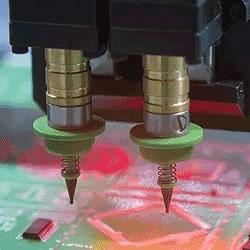The Future of Automation: How Pick & Place Robots Are Changing Manufacturing
Pick-and-place robots are commonly used in modern manufacturing environments. Pick and place automation speeds up the process of picking up parts or items and placing them in other locations.
According to the research report, the global pick & place robots market size is projected to reach USD 61.8 Billion by 2035, growing at a CAGR of 54.2%.
Introduction
The global pick & place robots market is experiencing significant growth, driven by increasing automation across industries. These robots are designed to quickly and efficiently pick up objects from one location and place them in another, enhancing productivity and reducing human intervention. With industries such as electronics, food & beverage, and e-commerce embracing automation, the demand for pick & place robots continues to rise. This article explores key market segments, major applications, and recent developments shaping the industry.
Key Market Segments
1. Delta Robots
Delta robots are widely used in industries requiring high-speed and precision operations, such as food packaging and pharmaceuticals. Their lightweight structure and parallel arm mechanism allow for rapid and accurate movements, making them ideal for tasks that demand efficiency. The increasing adoption of these robots in consumer goods manufacturing is driving their market growth.
2. SCARA Robots
Selective Compliance Articulated Robot Arm (SCARA) robots are commonly used in assembly and material handling applications. Their ability to perform fast and precise pick & place operations makes them ideal for electronics and automotive manufacturing. With advancements in artificial intelligence (AI) and machine vision, SCARA robots are becoming more intelligent and adaptable to complex industrial environments.
Major Applications
1. Electronics Manufacturing
Pick & place robots play a crucial role in assembling electronic components such as circuit boards, semiconductors, and microchips. The need for precision and consistency in electronics manufacturing makes these robots indispensable. As the demand for smartphones, wearables, and consumer electronics continues to rise, so does the adoption of automation in this sector.
2. Food & Beverage Industry
In the food and beverage sector, pick & place robots help in packaging, sorting, and palletizing products. They ensure hygiene and reduce contamination risks while improving efficiency. With the growing trend of packaged and processed food, companies are increasingly investing in robotic solutions to meet consumer demands.
Recent Developments
1. AI-Driven Vision Systems
One of the most significant advancements in the pick & place robots market is the integration of AI-powered vision systems. These systems enable robots to recognize objects, adapt to variations in size and shape, and optimize pick-and-place tasks in real-time. Companies like ABB and Fanuc are leading the way in developing intelligent robotics with advanced machine learning capabilities.
2. Collaborative Pick & Place Robots
The rise of collaborative robots (cobots) is another noteworthy trend. Unlike traditional industrial robots, cobots can work alongside human operators safely. These robots are gaining traction in small and medium-sized enterprises (SMEs) due to their ease of use, cost-effectiveness, and ability to enhance workforce productivity. Recent innovations in cobot technology, such as enhanced safety sensors and intuitive programming interfaces, are further boosting adoption.
Conclusion
The pick & place robots market is expanding rapidly, driven by advancements in robotics, AI, and automation. With industries prioritizing efficiency, precision, and cost savings, the demand for these robots will continue to grow. As new technologies emerge, the market is set to evolve, offering even more innovative solutions for businesses worldwide.
Featured Product

PI USA - Hexapods for 6-Axis Precision Automation
PI Hexapods simplify multi-axis alignment / positioning with a programmable pivot point, tool/work coordinate systems, virtual programming software.
